Wastewater Treatment
Industrial Service Solutions designs and manufacturers a variety of process water and wastewater treatment systems for municipalities, commercial and residential developments, disaster relief, and military support.
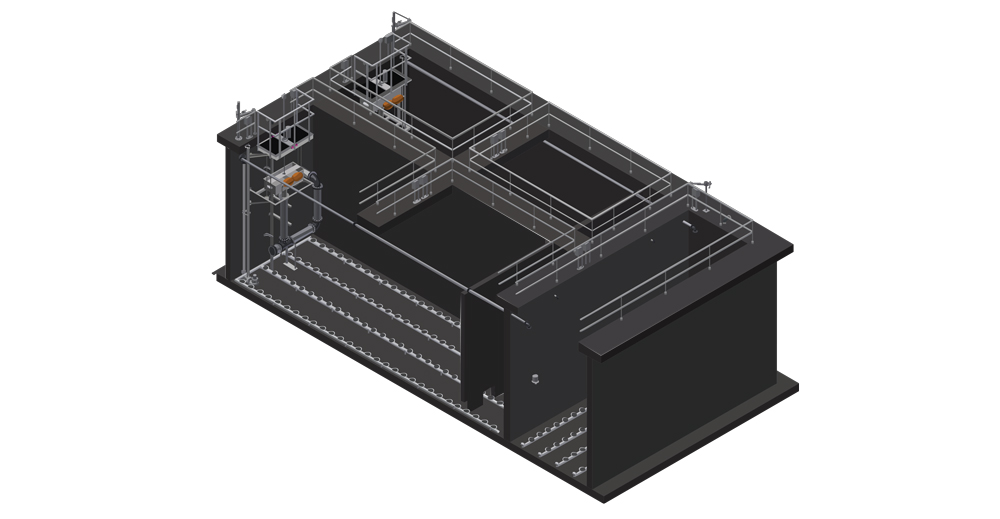
Minimum Space, Maximum Efficiency
The Wagner Fluid Systems Sequence Batch Reactor (SBR) is an aeration process for the complete treatment of municipal, industrial, and agricultural wastewater. The process takes place in a single tank and is capable of removing BOD, ammonia, and suspended solids and nutrients (including nitrates and phosphorus). The system treats sewage in a series of four distinct sequences.
Each reaction estimates a total of four hours to complete. An initial fill cycle allows raw sewage to enter the tank. An aeration cycle then converts non-volatile sludge (humus), and ammonia is oxidized to nitrate. After the aeration cycle is complete, a precipitation phase allows the sludge to settle under quiescent conditions. Treated effluent is then decanted from the tank during a decant phase, after which, the cycle is repeated.
The SBR typically consists of two or more tanks, allowing one tank to discharge treated effluent while another tank is available to accept sewage flow. The process contains minimal in-basin equipment ensuring affordable capital cost. The simple design and ease of operation ensures reduced maintenance and operation expenses.
Key Points
- Food processing, industrial, and municipal wastewater applications
- One tank for all cycles and steps: fill, react, settle, decant, and idle
- Complete effluent treatment, including nutrient removal
- Tolerates variable hydraulic and organic loading
- Offered in both continuous and batch operating modes
- Precisely controlled positively driven jack-screw decanter
- PLC (Programable Logic Control)
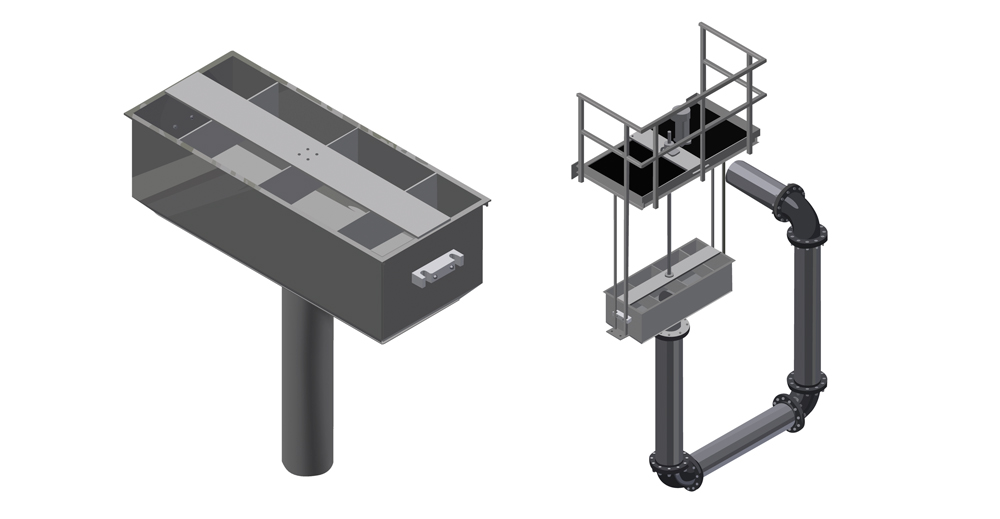 Vertically Driven, Highly Reliable
Vertically Driven, Highly Reliable
The heart of every Sequence Batch Reactor (SBR) system is the decanter. The decanter is responsible for removing clarified effluent from the basin during the decant phase of the sequence cycle.
The Wagner Fluid SBR by Ram Industrial Services is an advanced SBR technology designed for both batch or continuous inflow. All SBR processes are operated using defined cycle times adjusted to variable flow conditions. Each cycle typically consists of four main phases: fill, aerate, settle, and decant. The basin may be aerated-fill or anoxic-fill during the first half of the cycle. After the aeration phase, the system goes into a settling phase where liquid/solids separation occurs. In the final step, clear water is decanted out of the basin.
The WFS decanter is installed on the basin wall supported by a stainless-steel fabrication, grating and railing that provides a stable platform for maintenance and plant operators. The decanter is lowered and raised using an electro-mechanical jack screw actuator. The actuator moves the decanter between two set point elevations from the “park” position to the bottom water level (BWL). The decanter parks above top water level during the aeration and settling phases of the cycle, thereby eliminating any possibility of solids carryover during these periods.
The decanter operation and speed is controlled through use of a variable frequency drive (VFD). As a result, the decanter discharge rate is constant from the time the decanter enters the water to the time it reaches the BWL. Effluent volume per linear foot of weir is controlled and constant versus gravity style decant systems.
At “park” position, the decanter provides fail-safew overflow protection in the event of a power failure. Settled supernatant flow raise the scum gate floats allowing water to flow under the scum baffle and over the decanter weir free of floatable scum under power failure or storm mode.
The decanter weir always is visible from the basin walkway. This feature provides the operator with a continuous visual check of the effluent quality.
The Wagner Fluid System decants from the top and moves downward withdrawing only clear water from the basin and preventing disruption of the settling solids. All maintenance can be performed from the safety platform without entering the basin.
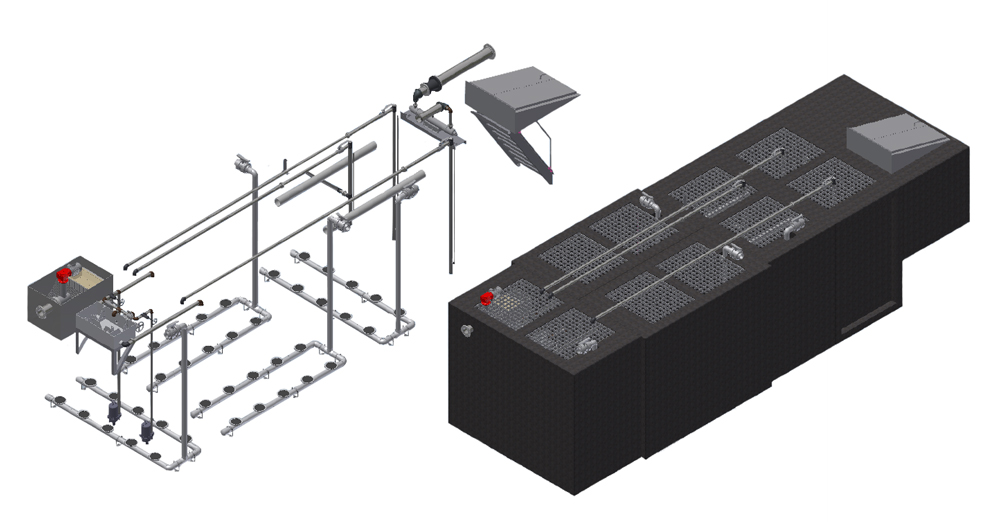 Engineered To Optimize Performance
Engineered To Optimize Performance
The extended aeration wastewater treatment plant is based on a time-proven, conservative process design, and engineered to optimize performance. Extended Aeration wastewater treatment plants are one of the simplest, economical and most versatile methods available to treat sanitary, industrial or agricultural wastewater. Treatment plants meet or exceed effluent parameters for most wastewater applications and are economical to install and operate.
Extended Aeration treatment plants provide the proper environment, sufficient oxygen, and other elements which allow the bacteria to consume the organic matter to live and multiply within the treatment plant. In this way the aerobic bacteria and microbes decompose the sewage and waste to a stable form free of odor and costly maintenance. Each plant consists of two major compartments, the main aeration chamber and a clarifier or settling tank. After initial screening, the wastewater enters the main aeration tank, which has a retention time of approximately 24 hours. Here, natural bacteria feed on the organic fraction of the sewage and reduce Biochemical Oxygen Demand (BOD) concentrations. The partially treated sewage then flows to the final settling tank for clarification prior to discharge. The effluent may be filtered and disinfected, depending on discharge permit requirements.
Key Points
- Food processing, industrial, and municipal wastewater applications
- Simple/low-cost design
- Minimal sludge production
- Constructed from concrete/epoxy
- Coated carbon steel for long lasting corrosion-free service
- Air-operated lift pumps
- Equipment startup
- Flexible process that can treat a wide range of wastewater
- May be designed with de-nitrification
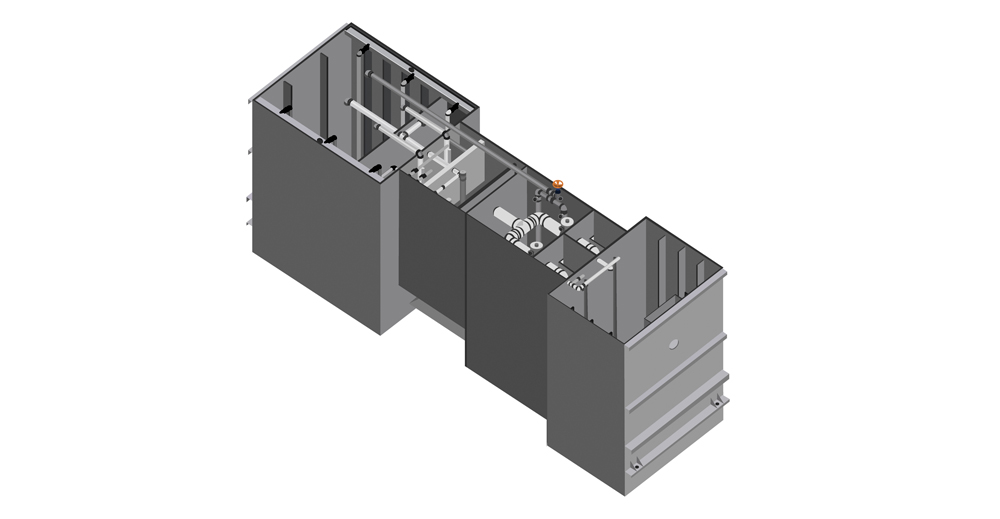 Time Proven: Tried and Tested
Time Proven: Tried and Tested
Wagner Fluid Systems “De-Nite” denitrification and tertiary filtration system provides a time proven process for the reduction of nutrients (Nitrate-N and Phosphorus) as well as suspended solids from the effluent of wastewater treatment plants.
The process accepts secondary effluent by gravity or lift station to a distribution box with automatic control valves. The distribution box and control valves direct water to each filter cell in proper sequence. The anoxic biological process and conversion of Nitrate-N to elemental Nitrogen gas takes place on a fixed film of bacteria residing on and within a coarse mono media.
The down flow design of the Wagner Fluid Systems “De-nite” Filter effectively reduces suspended solids and phosphorus by addition of Alum and mechanical filtration through the bed. The anoxic bacteria require a carbon source as supplement which may include Methanol, Acetic Acid and other proprietary chemistry.
Key Points
- Food processing, industrial, and municipal wastewater applications
- Enhanced carbon feed source control and monitoring
- Wide selection of level controls
- Highest quality grade of media
- Backwash, air scouring systems, control optimization
- Simple operator controls and optional system integration into existing plant control panel
- Operator training and field service support
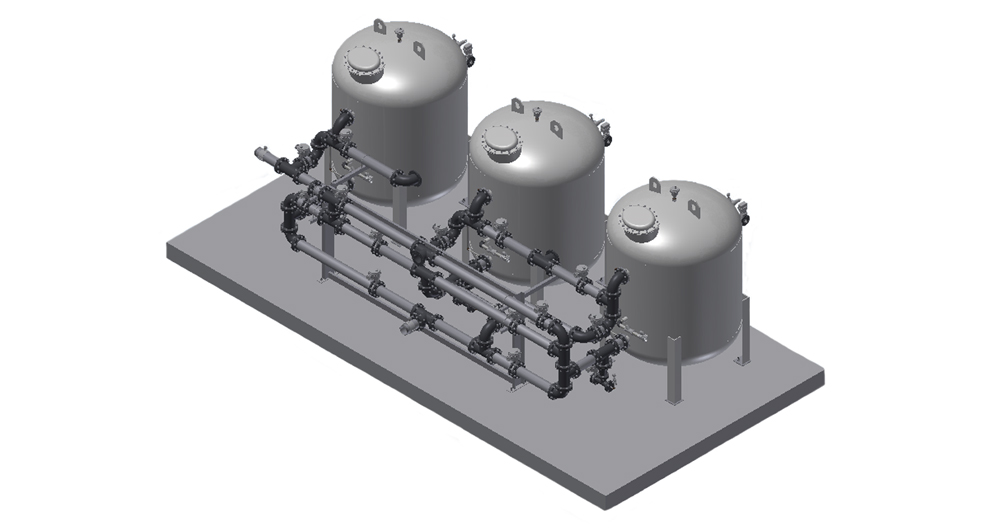 High Capacity, Higher Volume
High Capacity, Higher Volume
Wagner Fluid Systems Iron and Manganese Filters are engineered and designed to meet our customer’s speci c requirements. The process utilizes Green Sand Plus® which is superior to conventional Glauconite manganese Green Sand and synthetic catalyst. Green Sand Plus® eliminates the need for potassium permanganate regeneration and may be regenerated with chlorine, hypochlorite or any strong oxidant. It has signi cantly higher capacity which results in higher volume throughput, reduced backwash cycles and volume of waste to drain. Systems come complete with all face piping, blowers, automatic valves and controls, for proper operation.
Key Points
- Food processing, industrial, and municipal wastewater applications
- Tanks constructed from FRP and carbon steel per ASME section VIII (stainless steel available as option)
- Stainless-steel distribution and collection manifolds
- Stainless-steel air scour piping
- Pneumatic or electric actuated valves
- Carbon steel face piping, cement lined rubber, HDPE or stainless steel as option
- NEMA 4 painted carbon-steel or stainless-steel control panel with PLC and HMI touchscreen
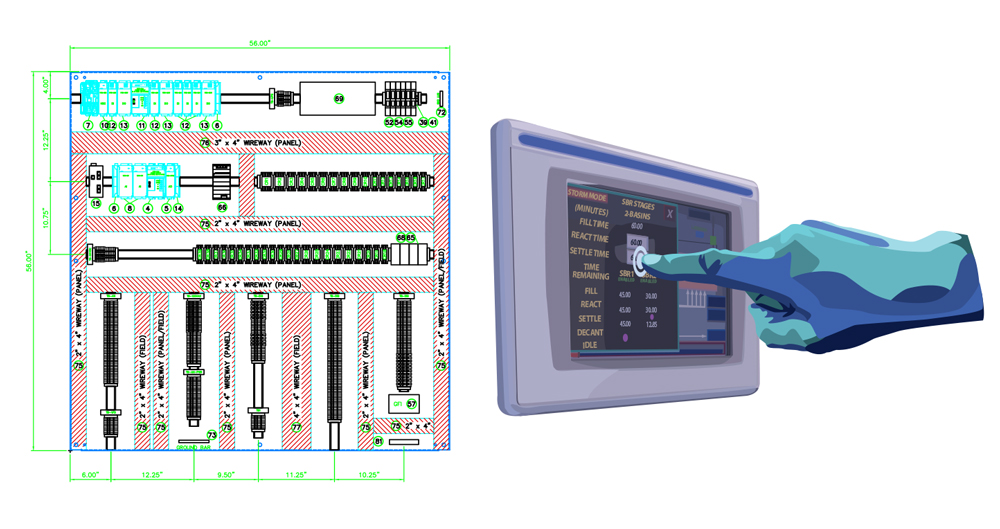 Total Control At Your Fingertips
Total Control At Your Fingertips
Ram Industrial Services is a UL-listed panel shop that provides custom control panels and engineering solutions for your complete system needs. From concept to completion and everything in between, Ram o ffers the highest level of service and technical expertise with our turnkey solutions. Specializing in: municipal water, wastewater control, sewer collection, head-works pump stations, water-distribution pump stations, industrial, oil and gas, VFD, PLC, SCADA applications, and HVAC. Ram’s unique capabilities and custom engineering solutions answer even the most complex applications.
We take both the control and mechanical components to create a complete system for our customers. We provide the product, integrate it into the system, and distribute the custom systems. Ram engineers, designs, and fabricates all panels in-house to ensure and maintain the highest quality control possible. Each control panel is fully documented and tested prior to delivery to reduce start-up, delay, and guarantee proper system operation.
Key Points
- Food processing, industrial, and municipal wastewater applications
- Design and fabrication
- PLC (Programmable Logic Control)
- VFD (Variable Frequency Drive)
- SCADA (Supervisory Control and Data Acquisition)
- Equipment startup
- UL 508A/ UL 698A listed control panels
- CAD drawings
- Wiring diagrams
- 24/7 on-call availability


